“Intel Tray Core i7 Processor i7-12700F 2,10Ghz 25M Alder Lake-S” has been added to your cart.
“Cooler Thermaltake TH420 ARGB Sync AIO Wasserkühlung CL-W376-PL14SW-A” has been added to your cart.
“Cooler Noctua NH-D15 chromax black” has been added to your cart.
“Cooler Be Quiet Pure Loop 2 FX – Prozessor – Wasserkühlung – 280mm (BW014)” has been added to your cart.
“Cooler Enermax LIQMAXFLO ELC-LMF360T-ARGB AiO Wasserkühlung” has been added to your cart.
“Cooler Thermaltake TH240 ARGB Sync AIO Wasserkühlung CL-W361-PL12SW-A” has been added to your cart.
“Cooler Be Quiet Pure Loop 2 120 mm AiO Wasserkühlung BW016” has been added to your cart.
“Cooler Noctua NH-L9i” has been added to your cart.
“Cooler Be Quiet Dark Rock 5 BK035” has been added to your cart.
“PC- Case Sharkoon Zone C10” has been added to your cart.
“PC- Case Thermaltake View 380 XL TG ARGB Snow White” has been added to your cart.
“Cool Alpine Föhn Brocken 4” has been added to your cart.
“Intel Tray Core i3 Processor i3-12100 3,30Ghz 12M Alder Lake-S” has been added to your cart.
“Intel Box Core i9 Processor i9-14900KF 3,20GHz 36M Raptor Lake-S Refresh” has been added to your cart.
“Intel Tray Core i9 Processor i9-13900KF 3,00Ghz 36M Raptor Lake” has been added to your cart.
“Intel Box Core i9 Processor i9-14900KF 3,20GHz 36M Raptor Lake-S Refresh” has been added to your cart.
“Cooler Gigabyte GP-AORUS WATERFORCE X II 240” has been added to your cart.
“Cooler Xilence Performance C M504D, PWM, Multisocket” has been added to your cart.
“LONX ELITE X | Ryzen 7 7800X3D • RTX 5070Ti • 32GB DDR5 • 2TB NVMe • Liquid Cooled Beast” has been added to your cart.
“SSD GIGABYTE 480GB Sata3 GP-GSTFS31480GNTD 2,5″” has been added to your cart.
“ASUS PRO H610M-C-CSM D4 (1700) (D)” has been added to your cart.
“Cooler Sharkoon A60 Air Cooler RGB White (4044951042067)” has been added to your cart.
“ASUS PRIME A520M-K (AM4) (D)” has been added to your cart.
“Cooler Be Quiet Dark Rock Pro 5 PWM BK036” has been added to your cart.
“Monitor Dell Alienware AW2525HM, 25″, Full HD, 320Hz, i zi” has been added to your cart.
“Intel Tray Core i5 Processor i5-12400 2,50Ghz 18M Alder Lake-S” has been added to your cart.
“Intel Tray Core i5 Processor i5-13600KF 3,50Ghz 24M Raptor Lake” has been added to your cart.
“Cooler Sharkoon A40 Air Cooler Black (84044951041985)” has been added to your cart.
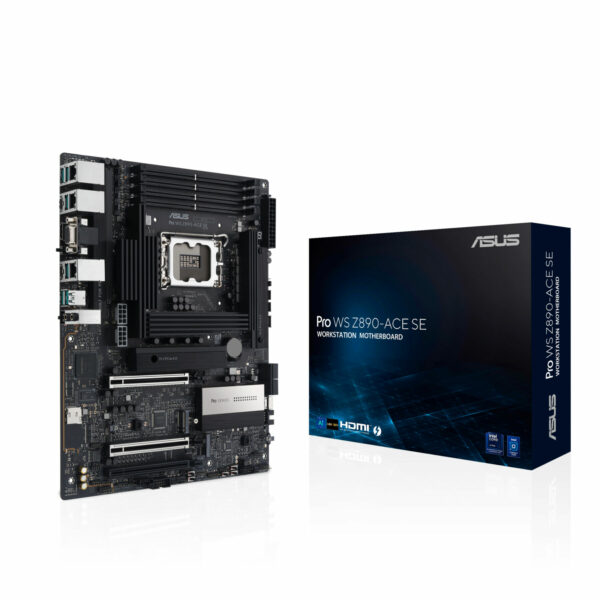
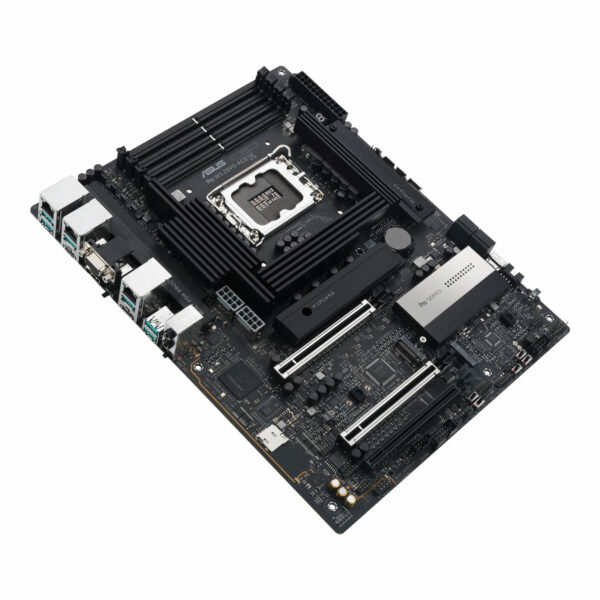
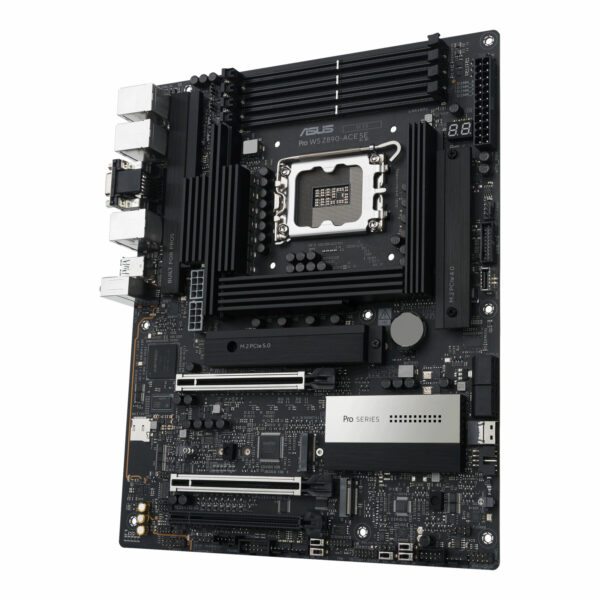
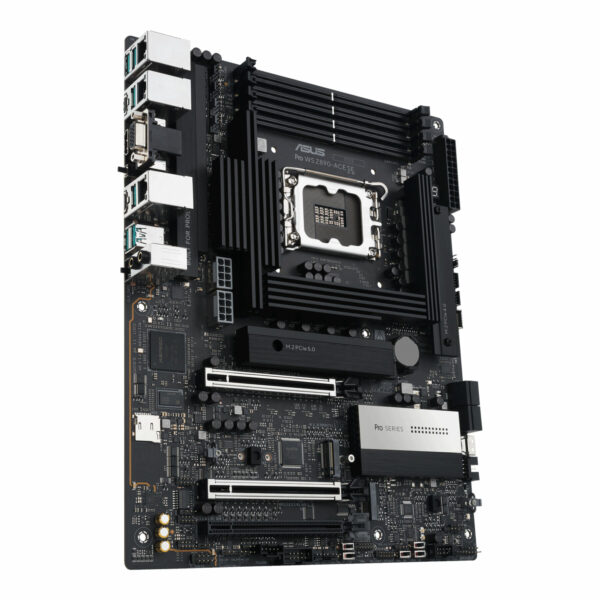
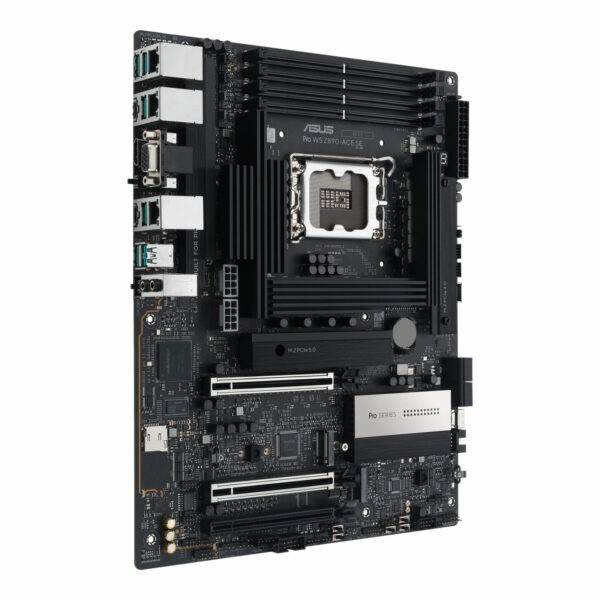



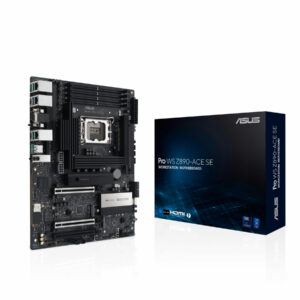
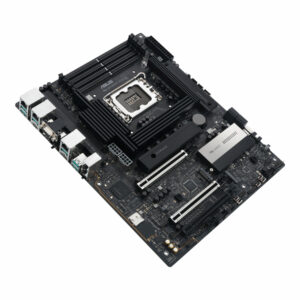
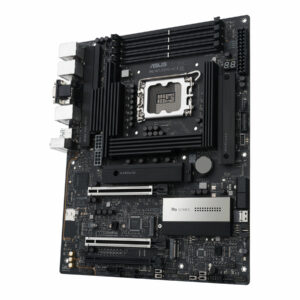
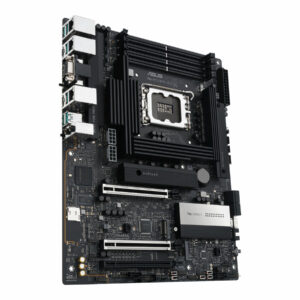
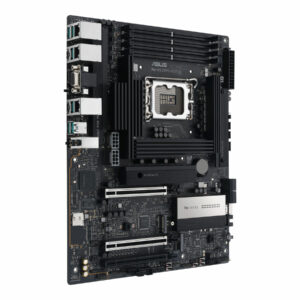

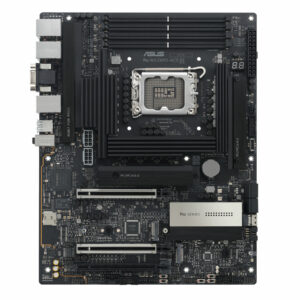

ASUS PRO WS Z890-ACE SE (1851) (D
0 out of 5
549 €
- Përshkrim
- Përshtypje (0)
- Store Policies
- Enquiries
Përshkrim
Specs
Processor
Processor manufacturer
The manufacturer that produced the processor.
Intel
Processor socket
Mechanical component(s) that provides mechanical and electrical connections between a microprocessor and a printed circuit board (PCB). This allows the processor to be replaced without soldering.
LGA 1851 (Socket V1)
Compatible processor series
A processor which is compatible with this device, belongs to a ‘series’ which is part of ‘family’ e.g Celeron D, Celeron G, Celeron M, or, in some cases, is the same as ‘family’.
Intel Core Ultra (Series 2)
Supported processor sockets
The sockets (plugs) for processors that are supported (can be used) by the device.
LGA 1851
Memory
Supported memory types
Types of memory which can be used with the product.
DDR5-SDRAM
Number of memory slots
4
Memory slots type
A memory slot, also known as a memory socket or RAM slot, is what allows computer memory (RAM) to be inserted into the computer. Depending on the motherboard, there will usually be 2 to 4 memory slots (sometimes more on high-end motherboards). The most common types of RAM are SDRAM and DDR for desktop computers and SODIMM for laptop computers, each having various types and speeds.
DIMM
Memory channels
Dual-channel
ECC сompatibility
Non-ECC
Supported memory clock speed (max)
9066 MHz
Maximum internal memory
The maximum internal memory which is available in the product.
256 GB
Unbuffered memory
Storage controllers
Supported storage drive types
The type of storage drives the device is compatible with.
HDD & SSD
Supported storage drive interfaces
M.2, PCI Express 5.0, SATA III
Number of HDDs supported
The total number of hard drives that can be used in/with this product.
4
Number of storage drives supported
How many storage drives can be fit into the product at once.
8
RAID support
The device uses RAID, which is a storage technology that combines multiple disk drive components into a logical unit for the purposes of data redundancy and performance improvement. Data is distributed across the drives in one of several ways, referred to as RAID levels, depending on the specific level of redundancy and performance required.
RAID levels
RAID is a storage technology that combines multiple disk drive components into a logical unit for the purposes of data redundancy and performance improvement. Data is distributed across the drives in one of several ways, referred to as RAID levels, depending on the specific level of redundancy and performance required.
0, 1, 5, 10
Graphics
Parallel processing technology support
Parallel processing technology is the simultaneous use of more than one CPU or processor core to execute a program or multiple computational threads. Ideally, parallel processing makes programs run faster because there are more engines (CPUs or Cores) running it. In practice, it is often difficult to divide a program in such a way that separate CPUs or cores can execute different portions without interfering with each other. Most computers have just one CPU, but some models have several, and multi-core processor chips are becoming the norm. There are even computers with thousands of CPUs.
Not supported
Internal I/O
USB 2.0 connectors
The end of a cable with a USB 2.0 connector. USB 2.0 was released in April 2000 (now called “Hi-Speed”), adding higher maximum signaling rate of 480 Mbit/s (effective throughput up to 35 MB/s or 280 Mbit/s), in addition to the “USB 1.x Full Speed” signaling rate of 12 Mbit/s. USB 2.0 connectors are usually colored black.
2
USB 3.2 Gen 1 (3.1 Gen 1) connectors
This is a connector (normally attached to a cable) for USB 3.0. USB 3.0 is the second major revision of the Universal Serial Bus (USB) standard for computer connectivity. First introduced in 2008, USB 3.0 adds a new transfer mode called “SuperSpeed,” (distinguishable from USB 2.0 by either the blue colour of the port or the initials SS) capable of transferring data at up to 5Gbit/s—more than ten times as fast as the 480 Mbit/s top speed of USB 2.0.
1
USB 3.2 Gen 2×2 connectors
1
Number of SATA III connectors
Serial ATA (Advanced Technology Attachment) (SATA) is a computer bus interface that connects host bus adapters to mass storage devices such as hard disk drives and optical drives. SATA III (revision 3.x) interface, formally known as SATA 6Gb/s, is a third generation SATA interface running at 6.0Gb/s. The bandwidth throughput, which is supported by the interface, is up to 600MB/s. This interface is backwards compatible with SATA 3 Gb/s interface.
4
Audio connector
Front panel audio connector
ATX Power connector (24-pin)
CPU fan connector
Number of CPU fan connectors
1
Number of chassis fan connectors
5
Chassis intrusion connector
EPS power connector (8-pin)
Number of EPS power connectors (8-pin)
2
Number of COM connectors
1
Thunderbolt headers
1
Integrated SAS ports
1
Number of water pump connectors
1
Number of temperature sensor headers
1
Rear panel I/O ports
USB 3.2 Gen 2 (3.1 Gen 2) Type-A ports quantity
6
USB 3.2 Gen 2×2 Type-C ports quantity
1
Ethernet LAN (RJ-45) ports
Number of Ethernet LAN (RJ-45) ports (connecting interfaces) in the device. Ethernet LAN (RJ-45) ports allow a computer to connect to the ethernet.
3
Rear panel I/O ports
HDMI ports quantity
The number of sockets (ports) for HDMI connections. HDMI (High-Definition Multimedia Interface) is a compact audio/video interface for transferring uncompressed video data and compressed/uncompressed digital audio data from a HDMI-compliant device (“the source device”) to a compatible computer monitor, video projector, digital television, or digital audio device. HDMI is a digital replacement for existing analog video standards.
1
Headphone outputs
Number of sockets /ports where headphones are connected.
1
Line-in
Thunderbolt ports quantity
The number of ports (sockets) for Thunderbolt connections. Thunderbolt is a hardware interface that allows for the connection of external peripherals to a computer. It uses the same connector as Mini DisplayPort (MDP). It was released in 2011 and is used in Apple’s 2011 MacBook Pro, as well as other devices.
1
Network
Ethernet LAN
An Ethernet LAN (Local Area Network) interface is present, for a wired conection via a cable.
Ethernet interface type
2.5 Gigabit Ethernet, 10 Gigabit Ethernet, Gigabit Ethernet
Wi-Fi
Popular technology that allows an electronic device to exchange data or connect to the internet wirelessly using radio waves.
Features
Motherboard chipset
The chipset connects the microprocessor to the rest of the motherboard.
Intel Z890
Audio chip
Realtek ALC1220P
Audio output channels
An audio output channel is an electric circuit which acts as a path for a signal produced by a device. A device may have several audio output channels.
7.1 channels
Product colour
The colour e.g. red, blue, green, black, white.
Black
Component for
What this product is used as a part of (component for).
PC
Motherboard form factor
Design of the motherboard (ATX, BTX etc).
ATX
Motherboard chipset family
The category of motherboard chipset e.g. Intel, AMD.
Intel
Cooling type
The method used to cool the device or to cool the air around the device.
Passive
Power source type
What the power source is.
ATX
Windows operating systems supported
Windows vesions wich can be used with the device.
Windows 10 x64, Windows 11
Expansion slots
PCI Express x16 (Gen 4.x) slots
1
PCI Express x16 (Gen 5.x) slots
2
Number of M.2 (M) slots
4
1st M.2 largest key size
2280
1st M.2 highest PCI Express generation
5.0
2nd M.2 largest key size
2280
2nd M.2 highest PCI Express generation
4.0
3rd M.2 largest key size
2280
3rd M.2 highest PCI Express generation
4.0
4th M.2 largest key size
2280
4th M.2 highest PCI Express generation
4.0
BIOS
BIOS type
The BIOS (Basic Input/Output System) initializes and tests system hardware components, and loads a bootloader or an operating system from a mass memory device. The BIOS additionally provides abstraction layer for the hardware, i.e. a consistent way for application programs and operating systems to interact with the keyboard, display, and other input/output devices. There are several types of BIOS, including the motherboard ROM BIOS, video BIOS, drive controller BIOS, network adapter BIOS, and SCSI adapter BIOS.
UEFI AMI
BIOS memory size
256 Mbit
Clear CMOS button
Packaging data
Package width
The distance from one side of the packaging to the other.
338.1 mm
Package depth
The distance from the front to the back of the packaging.
256 mm
Package height
The distance from the top to the bottom of the packaging.
50.8 mm
Package weight
Weight of the packaged product.
1.43 kg
Weight & dimensions
Width
The measurement or extent of something from side to side.
305 mm
Depth
The distance from the front to the back of something.
244 mm
Packaging content
Cables included
SATA
Bëhuni i pari që shqyrton “ASUS PRO WS Z890-ACE SE (1851) (D” Anuloje përgjigjen
General Enquiries
There are no enquiries yet.
Related Products
Pjesë për Kompjuter, Procesor
AMD Ryzen 7 5700G Box AM4 (3,800GHz)
0 out of 5
142 €
AMD Ryzen 7 5700G processor 3.8 GHz 16 MB L3 Box
Brand: AMD
Product family: Ryzen
Product series: 7
Product name: 5700G
Product code: 100-100000263BOX
EAN/UPC...
Pjesë për Kompjuter, Procesor
AMD Ryzen 9 7900X Box AM5 (4,700GHz)
0 out of 5
324 €
Model: 7900X
Series: AMD Ryzen™ 9
Cores: 12
Socket: Socket AM5
Boost frequency: 5.6...
Pjesë për Kompjuter, Procesor
Intel Box Core i5 Processor i5-13400F 2,50Ghz 20M Raptor Lake
0 out of 5
155 €
Model: i5-13400F
Series: Intel® Core™ i5
Cores: 10
Socket: LGA 1700
Boost frequency: 4.6...
Pjesë për Kompjuter, Procesor
Intel Tray Core i3 Processor i3-12100 3,30Ghz 12M Alder Lake-S
0 out of 5
105 €
Model: i3-12100
Series: Intel® Core™ i3
Cores: 4
Socket: LGA 1700
Boost frequency: 4.3...
Pjesë për Kompjuter, Procesor
Intel Tray Core i9 Processor i9-13900KF 3,00Ghz 36M Raptor Lake
0 out of 5
389 €
Model: i9-13900KF
Series: Intel® Core™ i9
Cores: 24
Socket: LGA 1700
Boost frequency: 5.8...


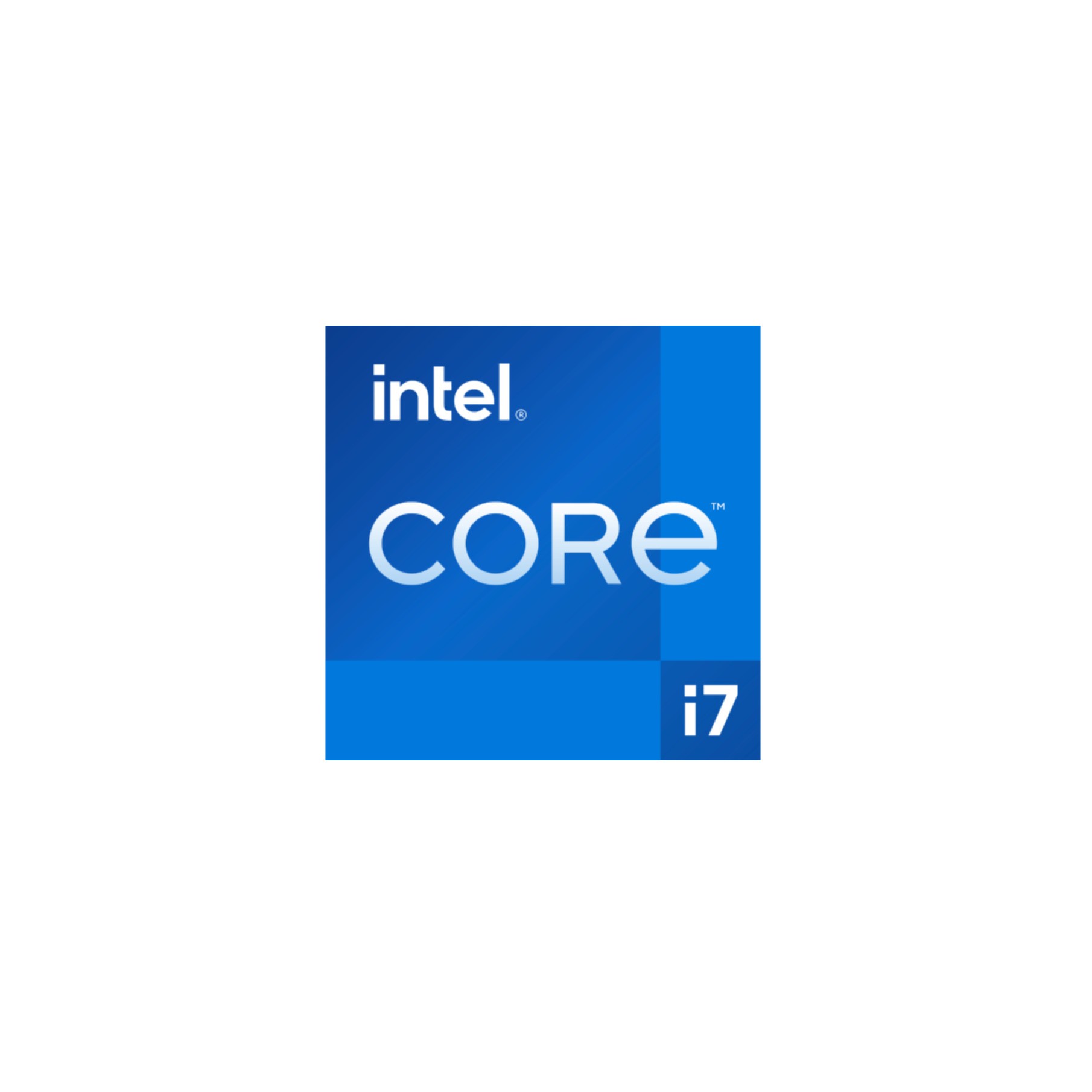



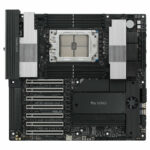
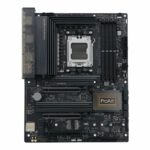

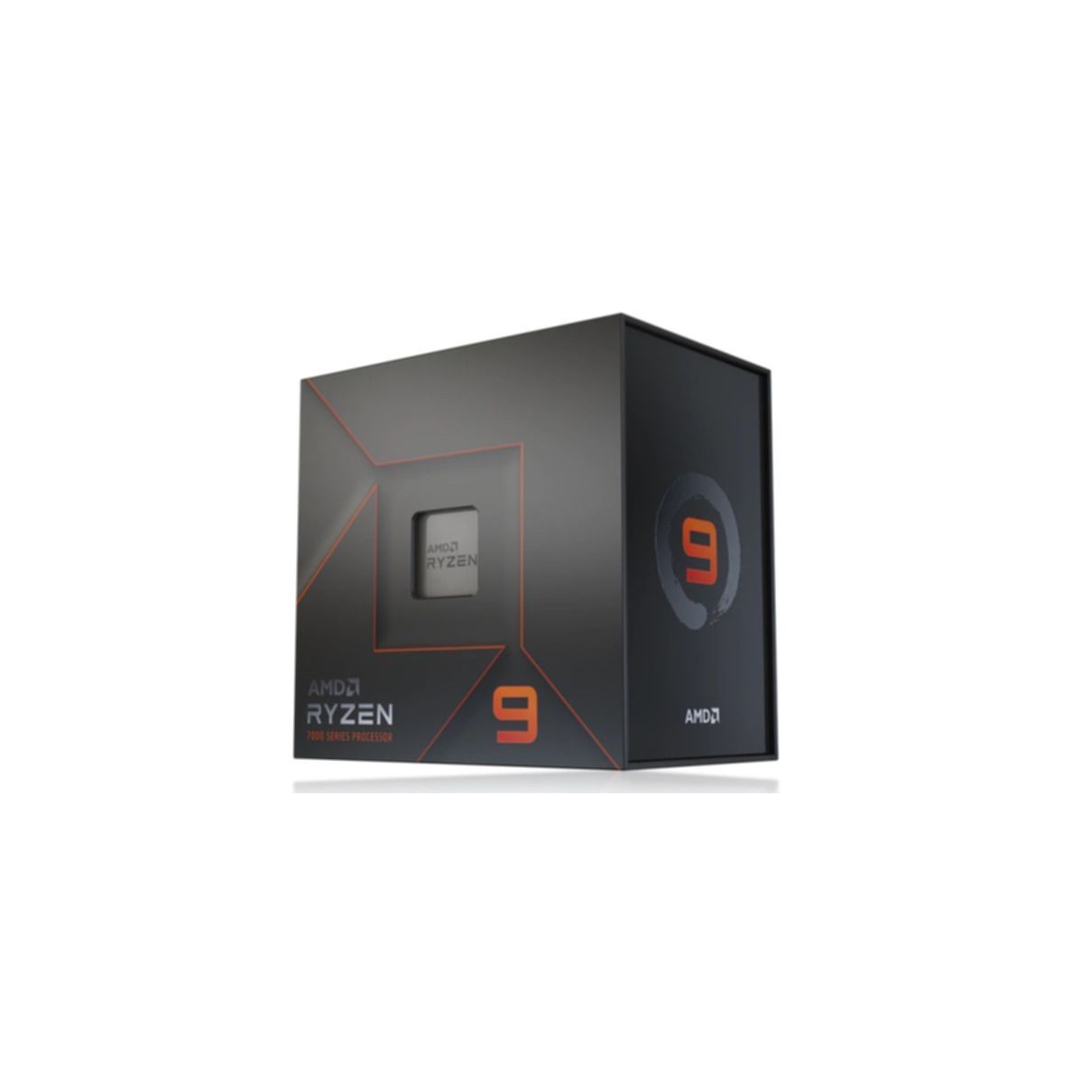
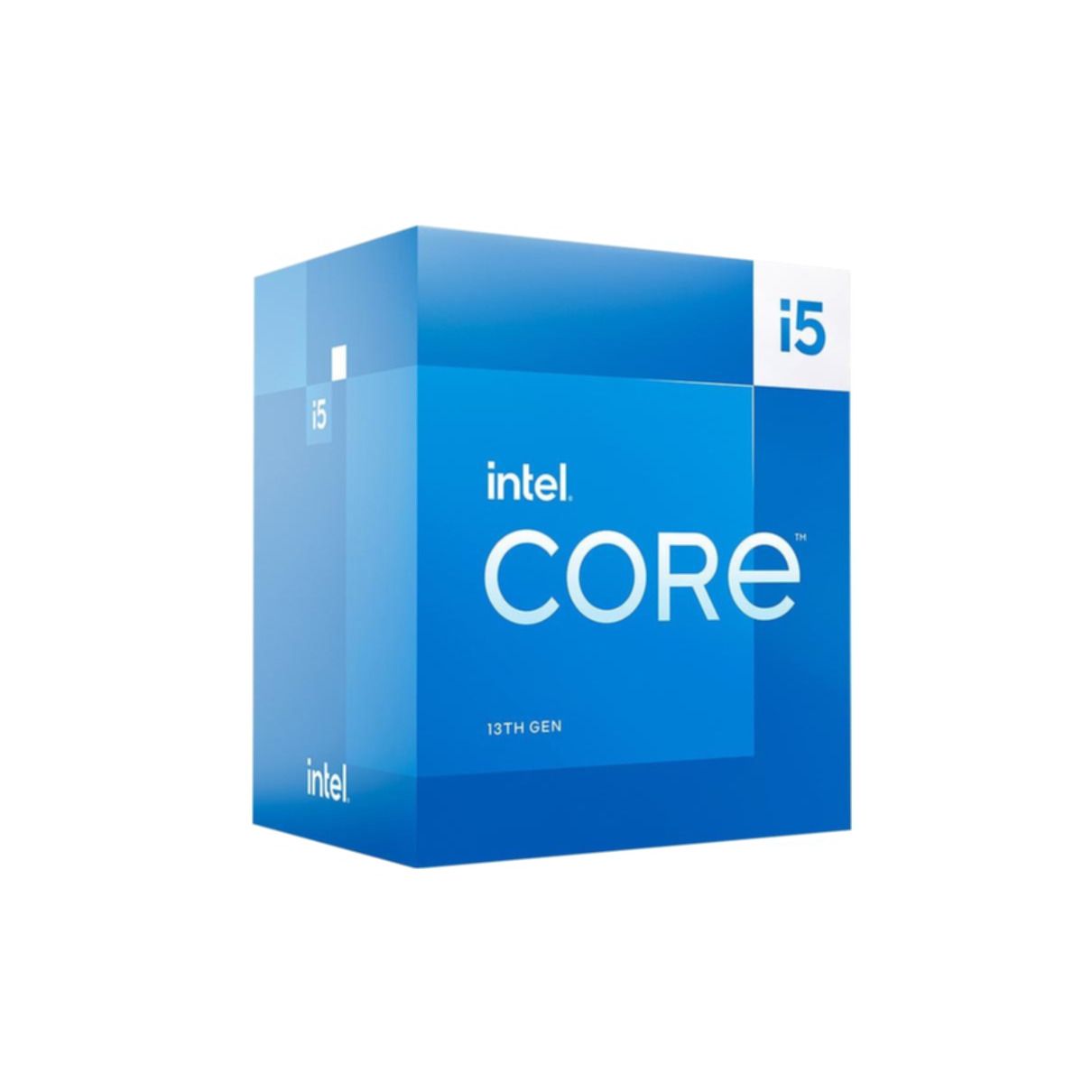

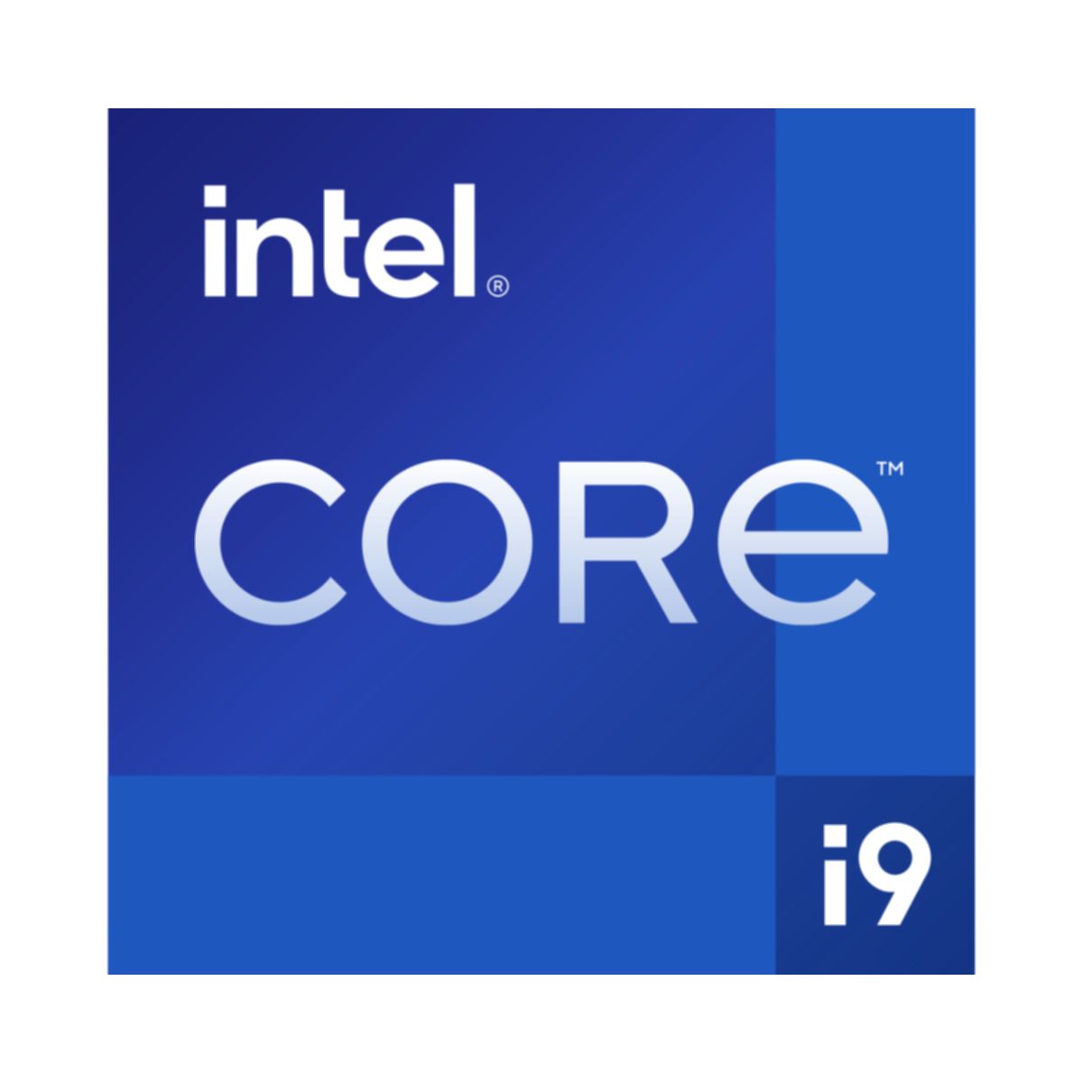
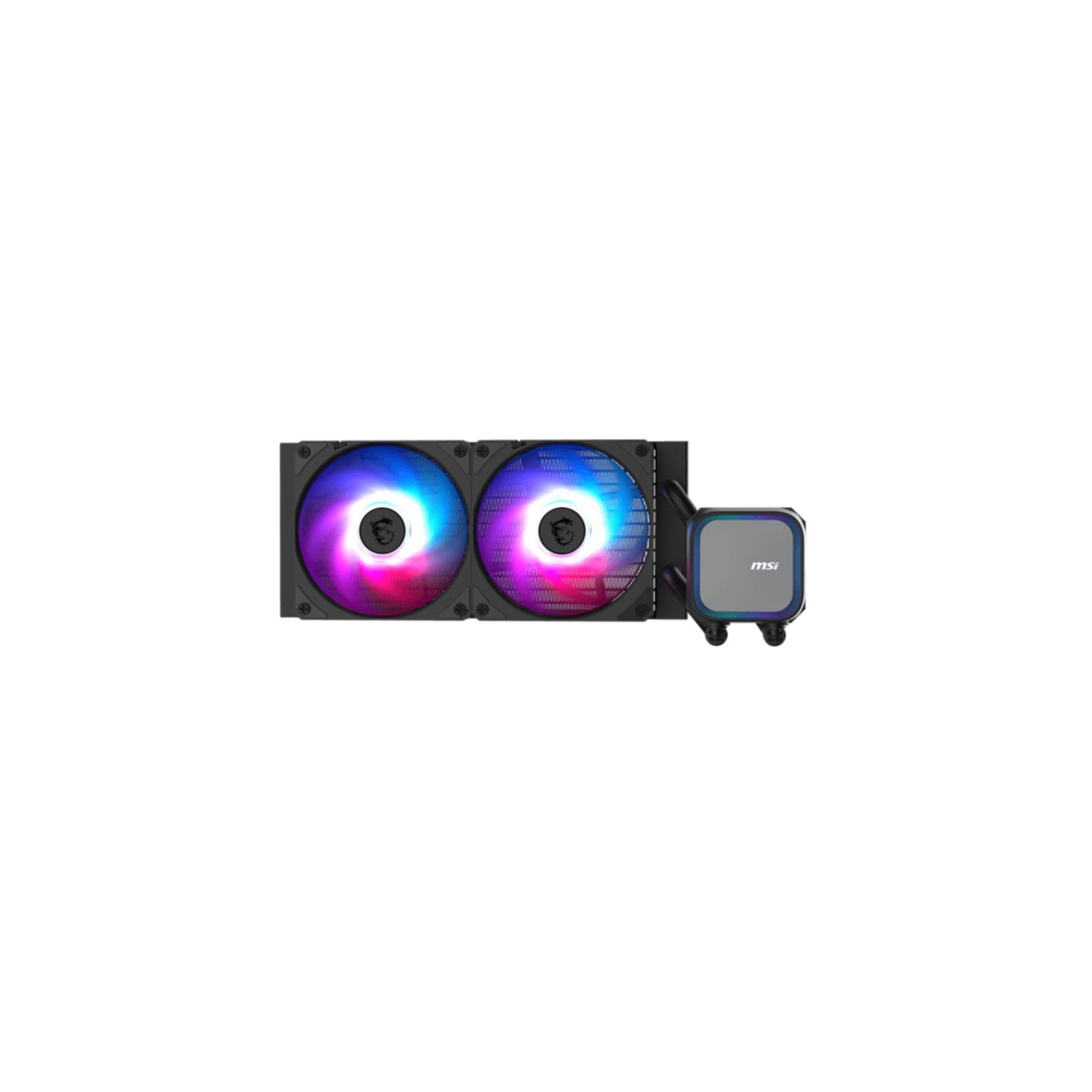
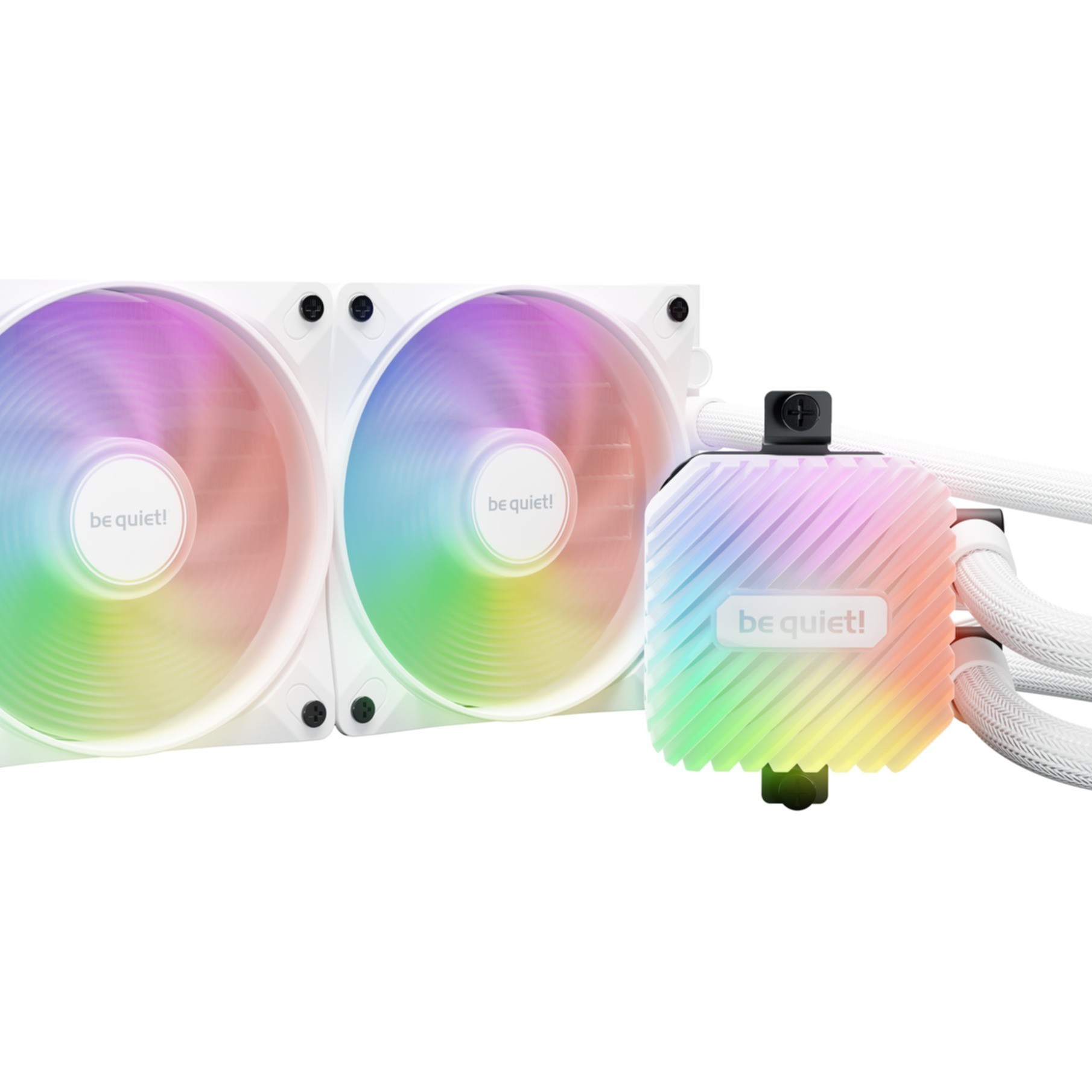

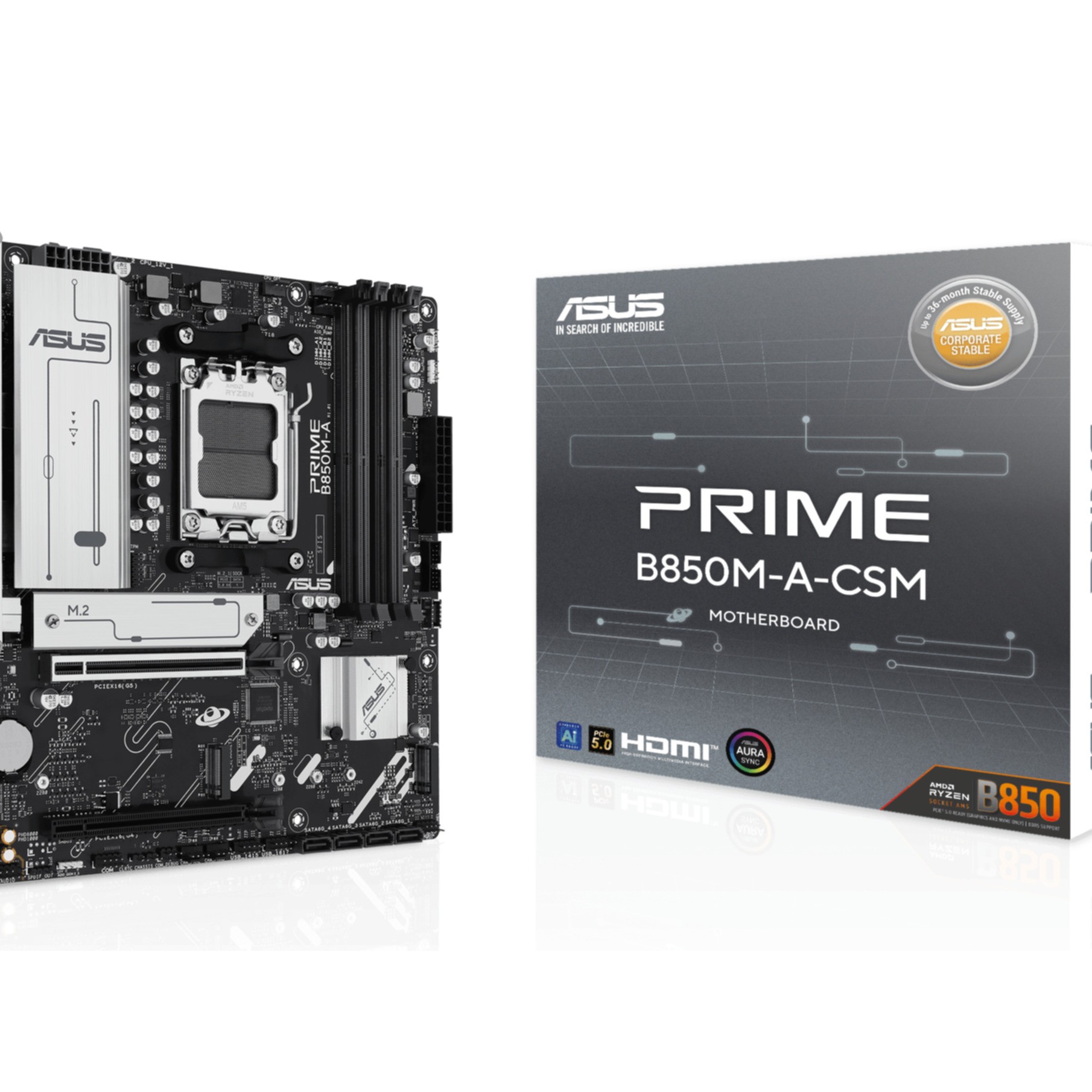

Shqyrtime
Ende pa shqyrtime.